One more year, Birding The Strait has participated in the Global Big Day in Andalucia. This time, we planned a route in the province of Cadiz, from Doñana to the Strait of Gibraltar. We decided to skip the Grazalema mountains in order to reduce the mileage and increase the effective birding time. All in all, it proved to be a most enjoyable day of birding. Moreover, we established a new record of species for the Global Big Day in Andalucia.
This is the chronicle of our Global Big Day 2021:
Sunrise in Doñana
Before dawn we headed for the Guadalquivir river mouth. We made a stop to observe the Bald Ibises roosting peacefully at their breeding colony in Vejer de la Frontera. Next, with the first light of day, we had a most remarkable observation: a striking subadult Spanish Imperial Eagle. The observation was so good that we managed to read the code on the ring she was wearing (white RH). Later on, we learned that this bird was born in Doñana in 2018.
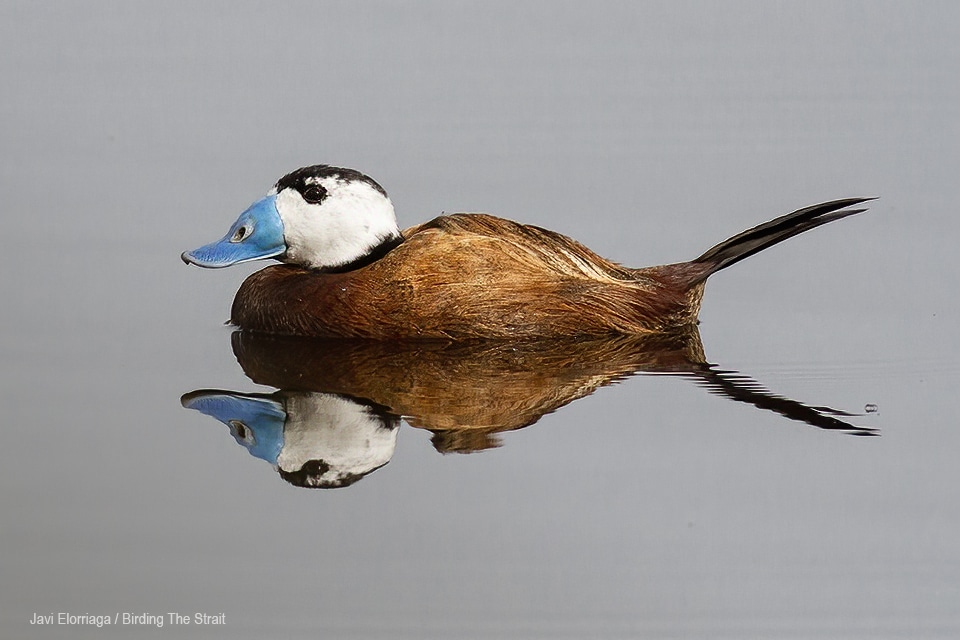
We spent the rest of the morning visiting several of the most strategic spots of the region. Here, we had much joy observing Marbled Teals, White-headed Ducks, Pin-tailed Sandgrouse, Red-knobbed Coots, Spectacled Warblers, Western Olivaceous Warblers, a varied array of waders and hundreds of Flamingos, to name but a few.

However, the highlight came as a Rufous-tailed Scrub-Robin singing right in front of us. Unexpectedly, we did not find a single Whiskered Tern, but something had to be left for the next time after all…

Before moving forward, we made a mandatory visit to the Little Swift colony in Chipiona, truly lively this time of the year.
Noon in the countryside
During the central part of the day, we toured the countryside between Medina Sidonia and Benalup. Here the star was a male Little Bustard in full courtship display. The good weather made it easier for us to continue detecting common species at a good pace. Suddenly, we came across an impressive group of more than 300 Griffon Vultures feeding on a carrion. Without hesitation, we decided to take our time to enjoy the show, hoping to find a Rüppell´s Vulture which never showed up…
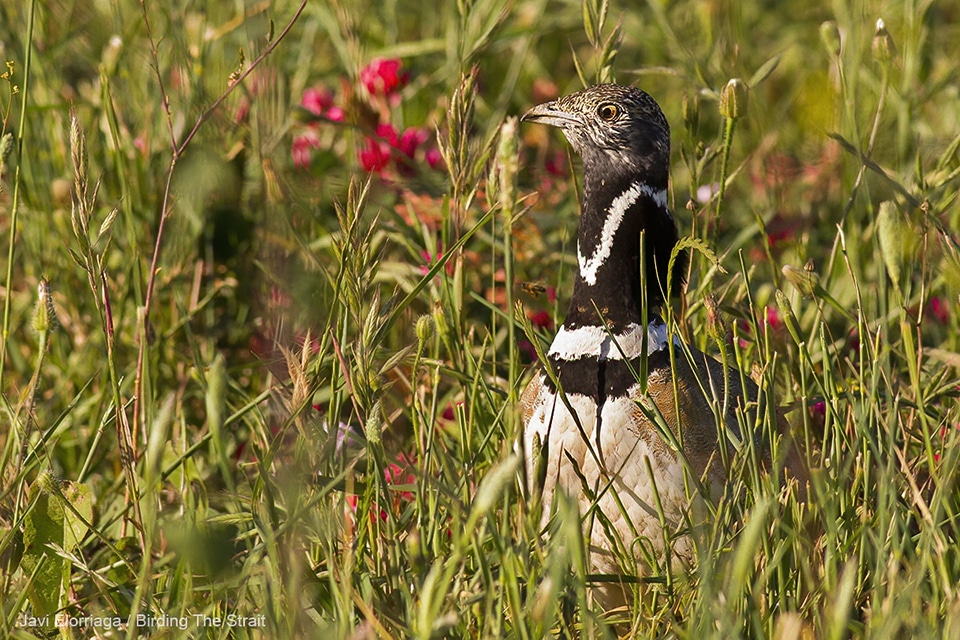
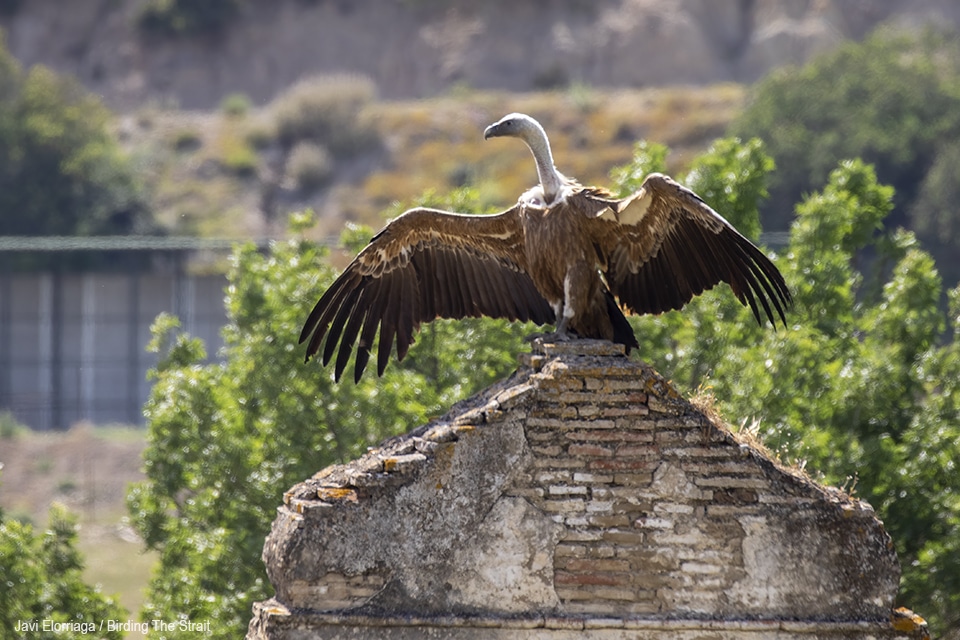
Afternoon at Los Alcornocales
During the first half of the afternoon, we went birding to the Ojén Valley. Remarkably, this is one of the best-preserved forests in the Los Alcornocales Natural Park. Here, we soon detected Golden Oriole, Iberian Chiffchaff, Sparrowhawk and all the expected forest-dwelling species. Moreover, a continuous stream of European Honey Buzzards in active migration crossed the valley.
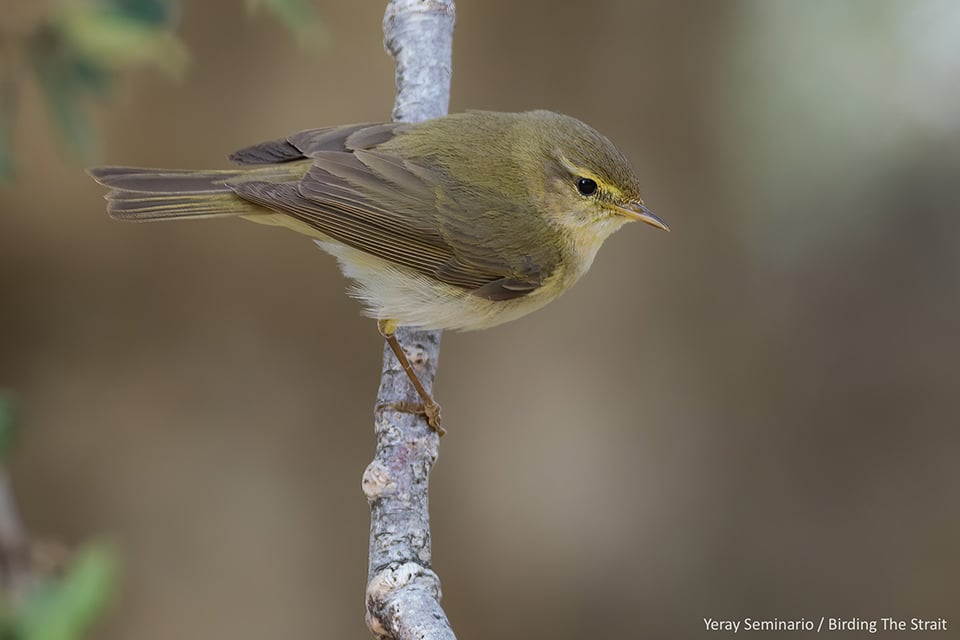
As we were about to leave the valley, we came across a family who had just had a bicycle accident. We helped them to get out of the valley in our car. This setback forced us to rethink the route. Thus, we decided to take it easy, skip the visit to the Tarifa area and move directly to La Janda.
Evening in La Janda
Once in La Janda, we spent the golden hour observing a group of six Montagu’s Harriers around their roost. At dusk, we easily spotlighted two Red-necked Nightjars. In addition, we also found two Barn Owls, two Tawny Owls and an impressive Eurasian Eagle-Owl that flew over our heads. Not bad at all!
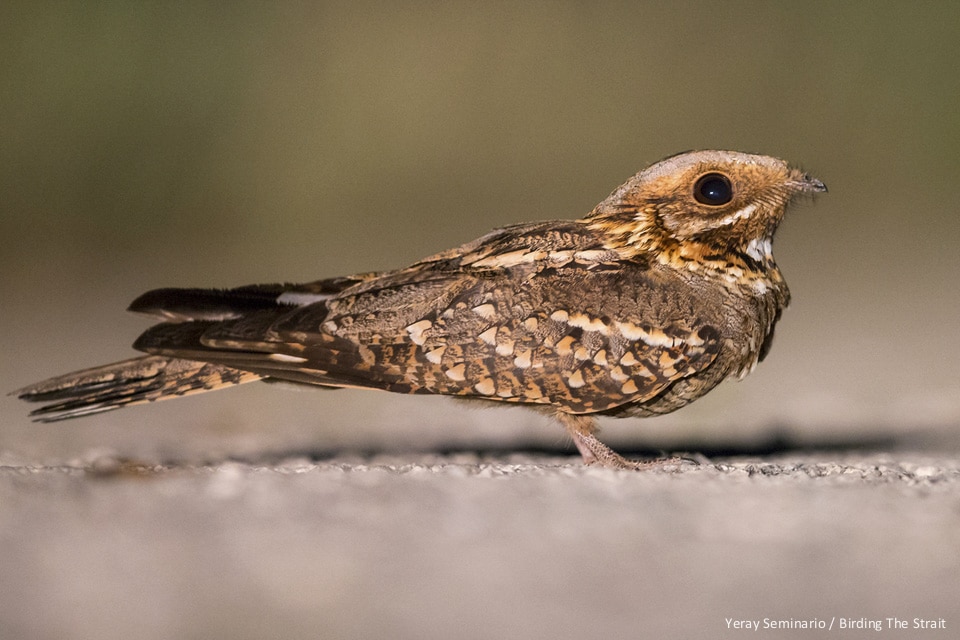
Shortly before 11 P.M. we reached Facinas where a Eurasian Scops Owl welcomed us with its call. At this point, we decided to call it a day. We had a Big Day indeed but still did not know the number of species that we had found. However, the three of us agreed we have had an outstanding day of birding!
Global Big Day in Andalucia Aftermath
Overall, we observed 151 species and completed 24 checklists on eBird. All this at a rather easy pace. Remarkably, this represents a new record of species seen by a single team in Andalusia during a Global Big Day.
This result is only another proof of the great diversity of habitats and birds that the province of Cadiz holds, which fills us with joy.
As usual, all the information generated during the Global Big Day is available in eBird. It is noteworthy that the ornithological information provided by eBird is widely used in scientific research and conservation projects all over the world.
In this link to our website you can read more about our commitment with citizen science and eBird.
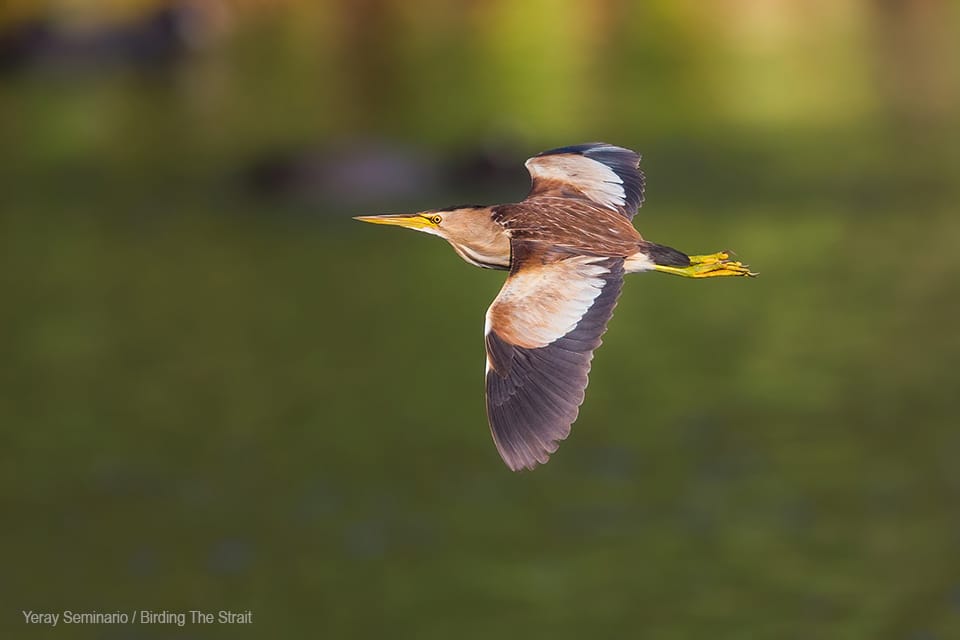
Acknowledgements
From Birding The Strait, we want to thank Laura Rollán and Guillermo Rodríguez for being part of our team at the Global Big Day. No doubt, their company and expertise was decisive. Thank you friends!
Finally, we also want to thank Excopesa Natura for making Zeiss binoculars and telescopes available to us. Undoubtedly, the use of this top-of-the-range lenses has contributed significantly to the success and enjoyment of the day.
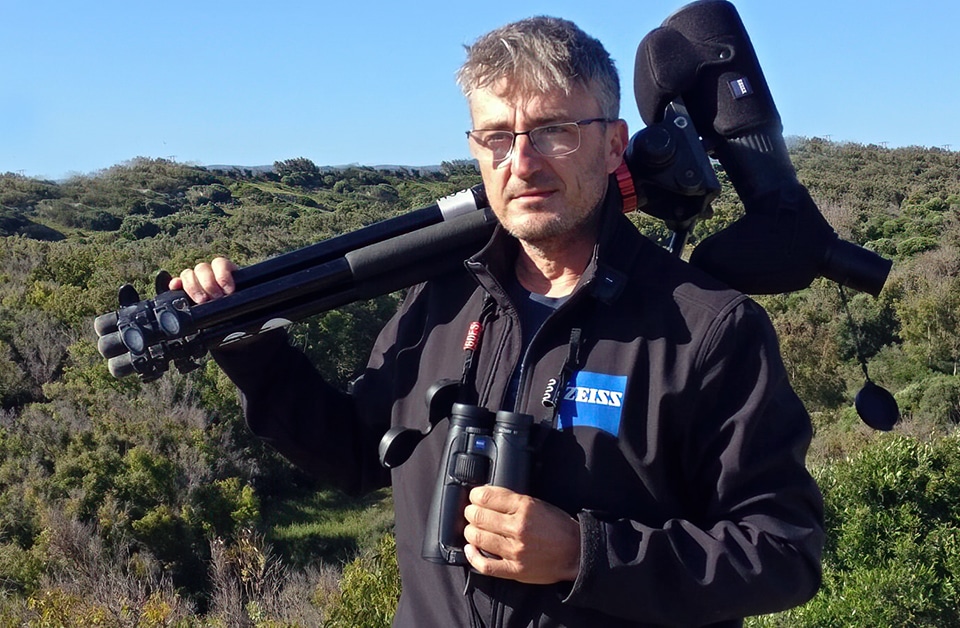
We are really looking forward the next Global Big Day in October!
Bird List
This is the complete list of birds observed during the #GlobalBigDay on May 8, 2021 by the Birding The Strait team:
- Common Nightingale
- Little Owl
- Common Pheasant
- Northern Bald Ibis
- White Stork
- Common Linnet
- Melodious Warbler
- Zitting Cisticola
- Crested Lark
- Common Magpie
- Black Kite
- Spanish Eagle
- Short-toed Eagle
- Gull-billed Tern
- Common Woodpigeon
- Rock Dove
- Mallard
- European Greenfinch
- Spanish Sparrow
- Rufous-tailed Scrub-Robin
- Spotted Flycatcher
- Spotless Starling
- Sardinian Warbler
- Red-rumped Swallow
- Barn Swallow
- Thekla’s Lark
- Woodchat Shrike
- Glossy Ibis
- Pallid Swift
- Common Swift
- Corn Bunting
- European Goldfinch
- Lesser Short-toed Lark
- Calandra Lark
- Greater Short-toed Lark
- Common Kestrel
- Lesser Kestrel
- Black-winged Kite
- Eurasian Spoonbill
- Black-crowned Night-Heron
- Squacco Heron
- Cattle Egret
- Little Egret
- Grey Heron
- Black Tern
- Yellow-legged Gull
- Collared Pratincole
- Northern Lapwing
- Grey Plover
- Pin-tailed Sandgrouse
- Collared Dove
- Common Shelduck
- Little Tern
- Common Redshank
- Pied Avocet
- Black-winged Stilt
- Eurasian Coot
- Common Moorhen
- Greater Flamingo
- Common Pochard
- Red-crested Pochard
- Marbled Duck
- European Serin
- Western Yellow Wagtail
- European Stonechat
- Spectacled Warbler
- Cetti’s Warbler
- Savi’s Warbler
- Great Reed Warbler
- Eurasian Reed Warbler
- Sedge Warbler
- Common Raven
- European Bee-eater
- Common Buzzard
- Red Kite
- Booted Eagle
- Great White Egret
- Black-headed Gull
- Slender-billed Gull
- Wood Sandpiper
- Green Sandpiper
- Common Sandpiper
- Little Stint
- Dunlin
- Curlew Sandpiper
- Red Knot
- Black-tailed Godwit
- Little Ringed Plover
- Common Ringed Plover
- Kentish Plover
- Western Swamphen
- Little Grebe
- Gadwall
- Eurasian Blackbird
- Short-toed Treecreeper
- Dartford Warbler
- Great Tit
- Osprey
- Ruddy Turnstone
- Black-necked Grebe
- Great Crested Grebe
- White-headed Duck
- House Sparrow
- Common Waxbill
- Black-headed Weaver
- Common House Martin
- Western Olivaceous Warbler
- Purple Heron
- Little Bittern
- Red-knobbed Coot
- Eurasian Hoopoe
- Sandwich Tern
- Common Tern
- Sanderling
- Lesser Black-backed Gull
- Audouin’s Gull
- Little Swift
- Bar-tailed Godwit
- Western Marsh Harrier
- Griffon Vulture
- Little Bustard
- Red-legged Partridge
- Eurasian Jackdaw
- Tawny Pipit
- Great Cormorant
- Egyptian Goose
- Cirl Bunting
- Rock Bunting
- Common Chaffinch
- Western Bonelli’s Warbler
- Eurasian Blue Tit
- European Robin
- Eurasian Wren
- Eurasian Nuthatch
- Common Firecrest
- Eurasian Blackcap
- Long-tailed Tit
- Iberian Chiffchaff
- Willow Warbler
- Crested Tit
- Eurasian Jay
- Eurasian Golden Oriole
- Great Spotted Woodpecker
- Eurasian Sparrowhawk
- European Honey-buzzard
- Montagu’s Harrier
- Tawny Owl
- Eurasian Eagle Owl
- Barn Owl
- Red-necked Nightjar
- Eurasian Scops Owl